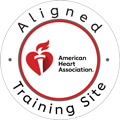Cardiac emergencies strike suddenly and often without warning, underscoring the need for swift and effective response. Every second counts in these high-stakes situations, where timely intervention can mean the difference between life and death. Amidst the chaos of cardiac emergencies, healthcare providers rely on specialized training to guide their actions and decisions. Two key protocols, Pediatric Advanced Life Support (PALS) and Basic Life Support (BLS), play pivotal roles in resuscitating patients in cardiac distress. This article aims to unravel the nuances between PALS and BLS, shedding light on their distinct methodologies and applications. By understanding the differences between these protocols, healthcare professionals can better navigate pediatric and adult cardiac emergencies, ultimately saving more lives.

Understanding Basic Life Support (BLS)
BLS encompasses a set of fundamental techniques aimed at sustaining life in emergency situations. It serves as the cornerstone of resuscitation efforts, providing immediate care until advanced medical assistance arrives. BLS training is typically geared towards healthcare professionals and laypersons alike, emphasizing the importance of early intervention and the ability to recognize signs of cardiac arrest. Key components of BLS include chest compressions to maintain circulation, rescue breaths to provide oxygenation, and the use of an Automated External Defibrillator (AED) to restore normal heart rhythm. Recognition of cardiac arrest signs is also paramount for prompt initiation of resuscitation efforts.
Understanding Pediatric Advanced Life Support (PALS)
PALS is a specialized protocol designed specifically for pediatric patients in cardiac distress. It focuses on addressing the unique physiological and anatomical differences between children and adults, ensuring appropriate care for pediatric populations.
Unlike BLS, PALS incorporates age-specific considerations, such as the use of specialized medications and equipment tailored to pediatric patients. Team dynamics also play a crucial role in PALS resuscitation, emphasizing effective communication and coordination among healthcare providers.
Key Similarities between PALS and BLS
Despite their differences, PALS and BLS share common goals in resuscitation, namely to restore circulation and oxygenation to the patient’s vital organs. Both protocols underscore the importance of early recognition and intervention in cardiac emergencies, highlighting the critical role that bystanders and healthcare providers play in improving outcomes. Both PALS and BLS adhere to guidelines established by the American Heart Association (AHA), ensuring standardized protocols and best practices in resuscitation efforts.
Training and Certification
BLS certification is typically obtained through accredited training programs, which cover essential resuscitation techniques and protocols. These courses may be tailored to specific healthcare settings or populations. PALS training is more specialized and is geared toward healthcare providers who care for pediatric patients. It includes advanced techniques and protocols specific to pediatric resuscitation.
Call Us Now
Get the Best CPR Class in Indianapolis Today!
Recertification requirements for both BLS and PALS may vary depending on the certifying organization and jurisdiction. Updates to guidelines and protocols are often incorporated into recertification courses to ensure providers stay current with best practices.
Regular recertification is essential for maintaining proficiency in BLS and PALS techniques. It allows healthcare providers to refresh their skills and stay abreast of advancements in resuscitation science. BLS recertification typically involves completing a refresher course and passing an assessment to demonstrate competency. PALS renewal may require continuing education credits, skills assessment, and practice sessions to maintain certification. Staying current with updates and guidelines is crucial for ensuring optimal patient care and improving outcomes in cardiac emergencies.
Challenges and Considerations
Implementing BLS and PALS techniques in real-world scenarios can present challenges, including bystander reluctance to intervene and variations in provider training and experience. Ongoing training and simulation exercises can help address these challenges by providing healthcare providers with opportunities to practice and refine their skills in a controlled environment. Addressing barriers to effective resuscitation, such as equipment availability and resource constraints, requires collaboration and innovation within healthcare systems.
Advances in technology, such as smartphone applications and telemedicine platforms, hold promise for improving access to resuscitation resources and support in cardiac emergencies. Virtual reality and simulation training offer immersive learning experiences for healthcare providers, allowing them to practice critical skills in realistic scenarios without risk to patients. Emerging research and protocols in pediatric resuscitation continue to shape the landscape of PALS, with ongoing efforts to optimize outcomes and reduce morbidity and mortality in pediatric cardiac emergencies.
In summary, understanding the nuances between Pediatric Advanced Life Support (PALS) and Basic Life Support (BLS) is essential for healthcare professionals and anyone involved in the care of children. PALS certification in Indianapolis and BLS certification in Indianapolis are crucial components in ensuring the readiness to respond effectively to pediatric emergencies. With CPR Indianapolis serving as an American Heart Association training site, individuals have access to comprehensive courses designed to equip them with the necessary skills and knowledge. Offering stress-free and hands-on classes, CPhttp://cprindianapolisin.com/classes/bls-for-healthcare-providers-cpr-indianapolis/R Indianapolis stands out as a beacon for excellence in CPR education, providing the best CPR training in Indianapolis. By investing in PALS and BLS certifications through reputable training sites like CPR Indianapolis, healthcare professionals, and caregivers can enhance their ability to act swiftly and confidently in critical situations, ultimately becoming heart heroes in their communities by safeguarding the lives of children.


